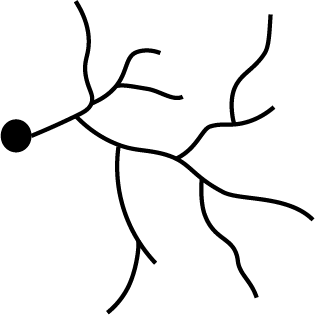

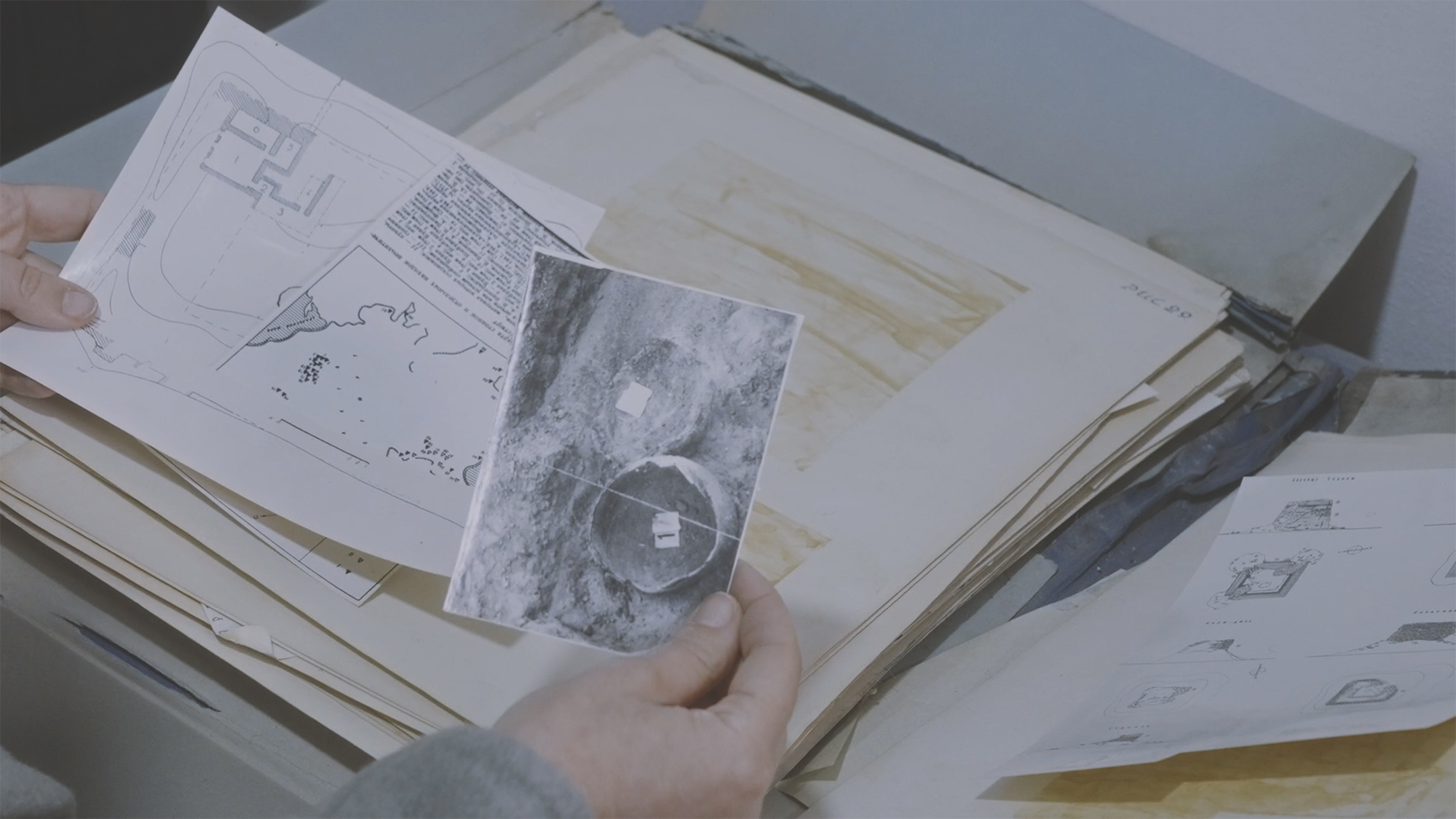

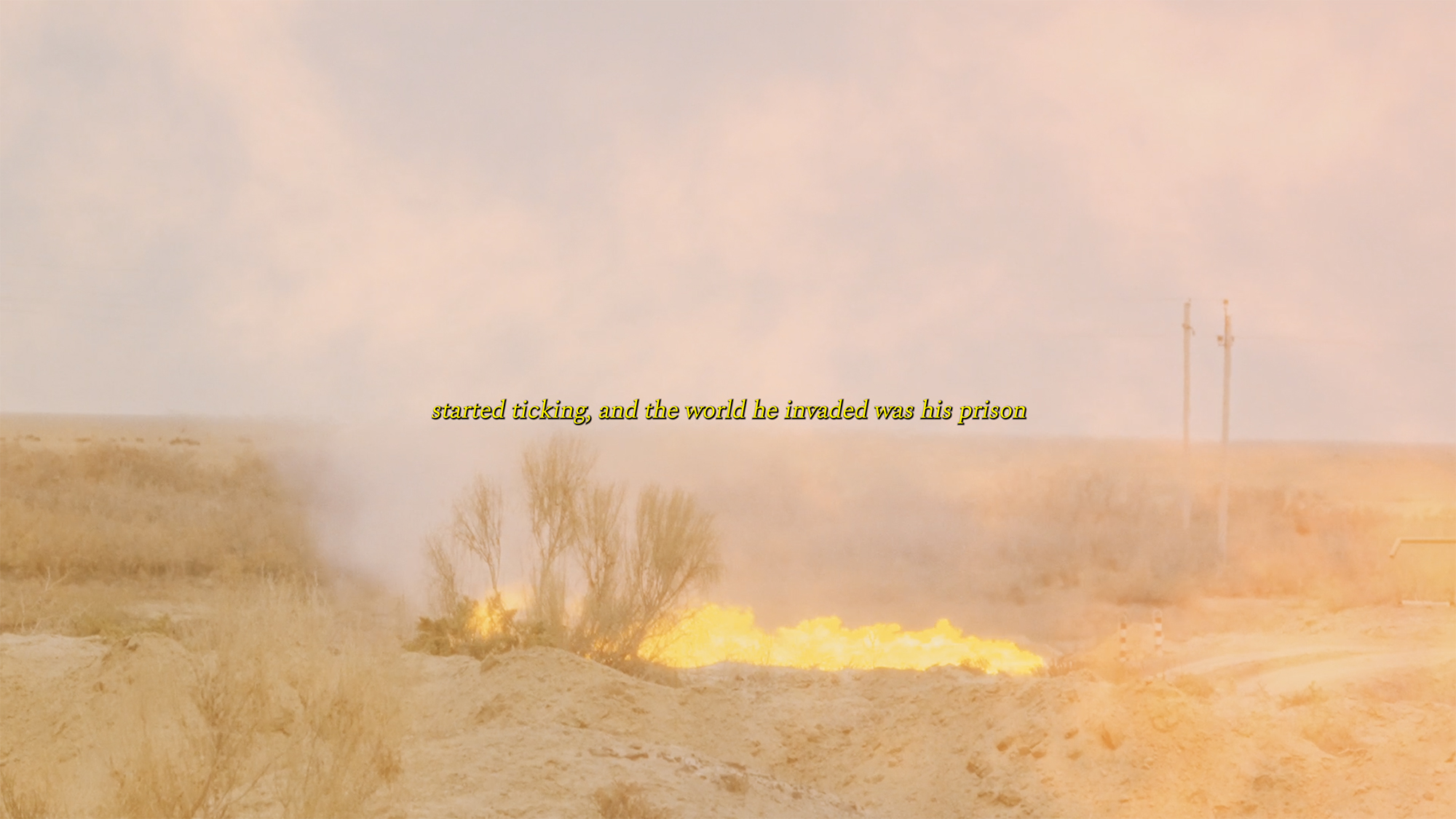
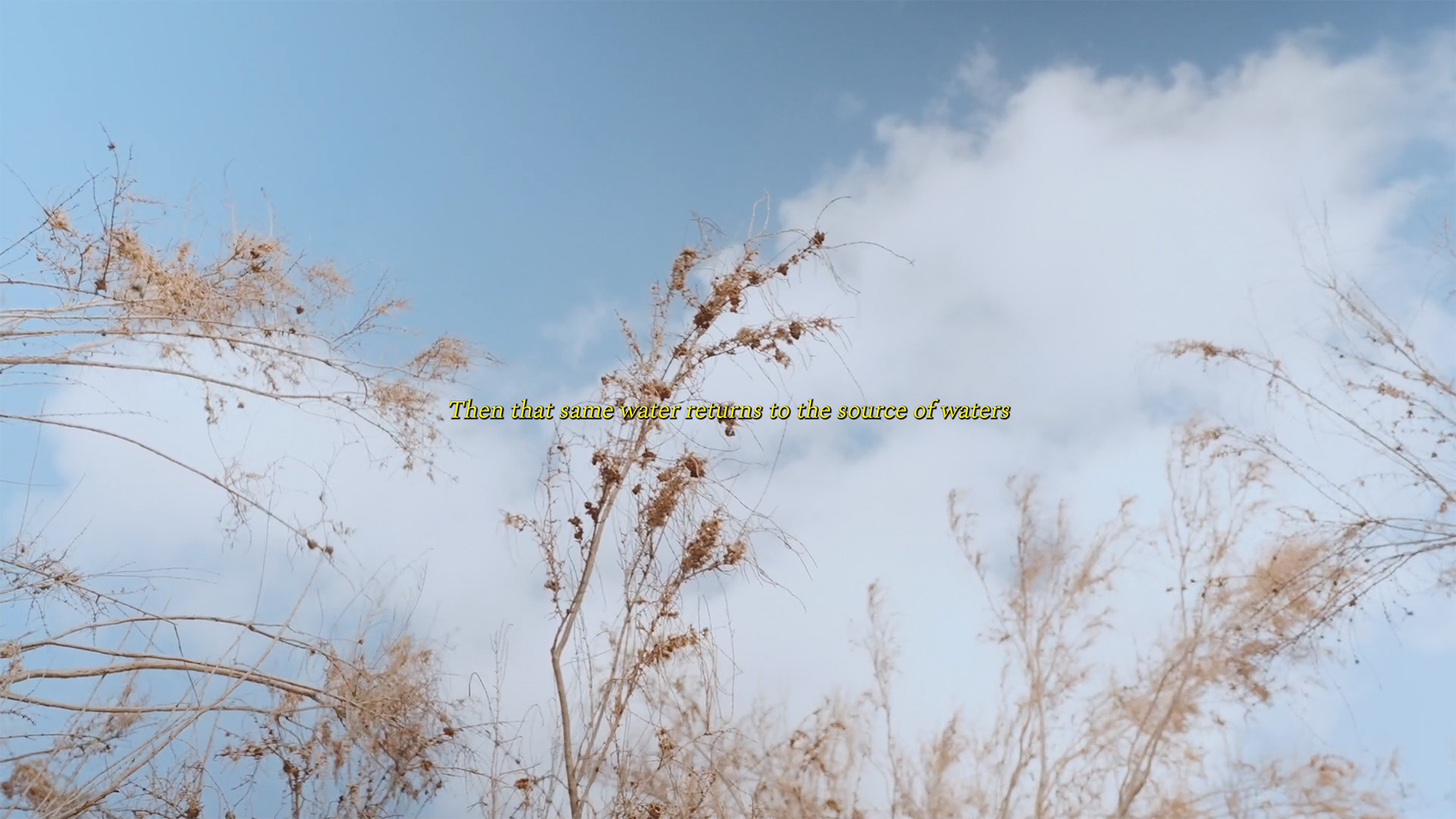
Film still, She from the sky, 2025, single-channel video with sounds, 33 minutes 52 seconds
This experimental documentary situated its historical context within the Khorezmian Archaeological-Ethnographic Expedition of the USSR in Kyzylkum and Karakum deserts in Central Asia (1937-1991). It was the biggest and the longest in the USSR, and a thousand archaeological sites were found and recorded. Now these are the territories of Uzbekistan (Karakalpakstan), Turkmenistan and Kazakhstan. As a large-scale science project, it served the general Soviet ideological, colonial and industrialisation agenda in Central Asia. The archaeologists, through their innovative interdisciplinary collaboration with soil scientists and geomorphologists, alongside decades of extensive aerial surveying of ancient irrigation systems, involuntarily catalyzed the partial diversion of rivers, the development of hydroelectric facilities, and ultimately, the tragic vanishing of the Aral Sea. The desert took over, the expedition stopped, its story and huge archive dusted, and the empire collapsed.
Departing from this background, the film explores the possibilities of reconstruction - the reconstruction of topographies, civilizations, personal and collective memories, the psychological and physical restoration from ecological trauma. Following the morphing and wandering bodies of water, from the unidentifiable water deities to the disappearing Aral Sea, the narratives merge scientific and mystical-historical worldviews, piecing together fragments of intersecting and clashing temporalities - cosmic time, evolutionary time, vegetal time, cyclical time, and revolutionary time.
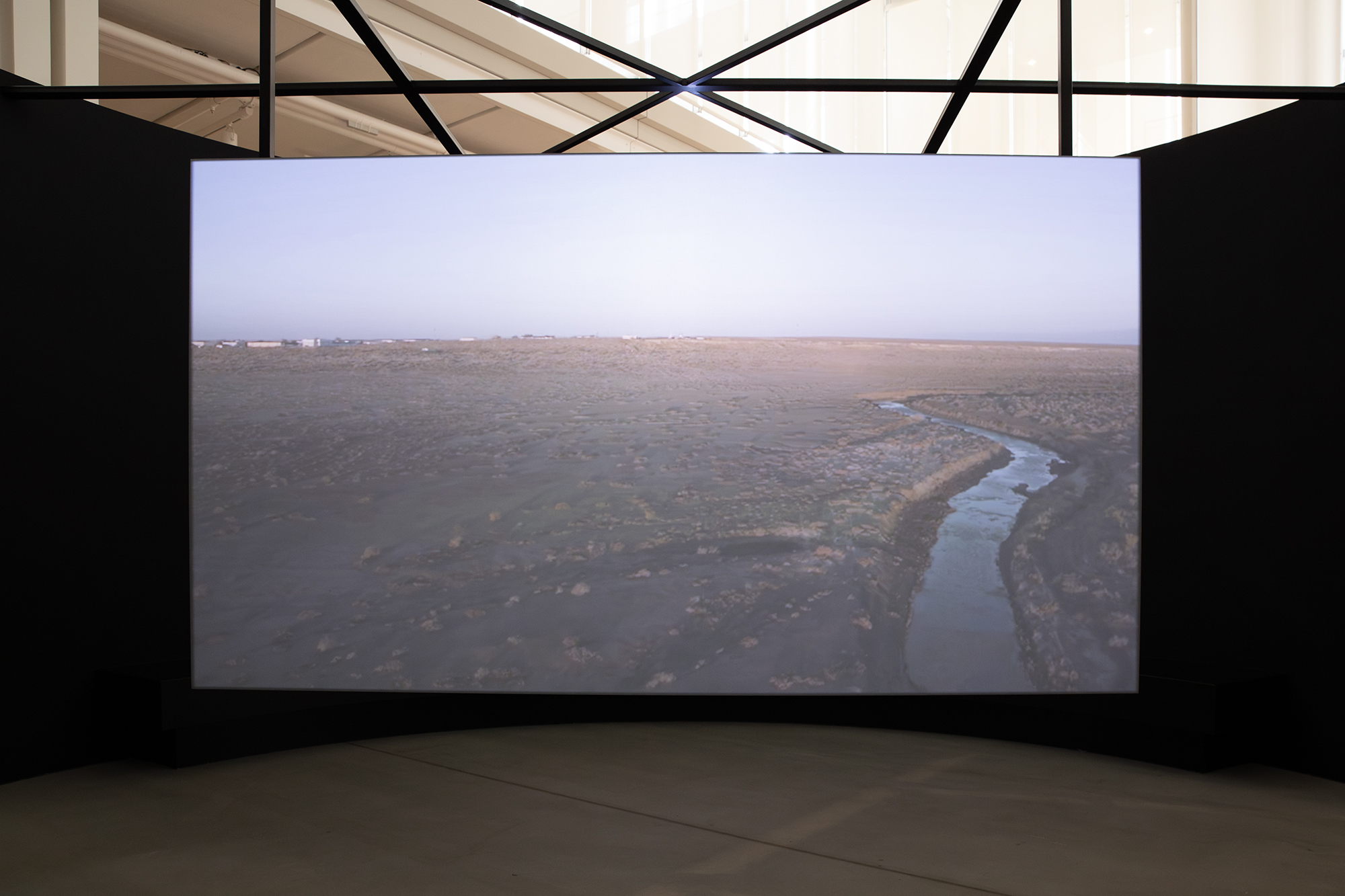




Video installation. She from the Sky, 2025.
Commissioned and produced by GES-2 House of Culture.
Photo: Anna Zavozyaeva
----
Excerpt from the curatorial text by Katerina Chuchalina:
She from the Sky was created especially for the project Split Together, Merged Apart, following a trip to Uzbekistan, the Aral Sea, and the sites of the Khorezm Expedition.
Shuyi Cao’s film is constructed as a collage and interchange between the voices of archaeologists, ichthyologists, economists, and ecologists. The range of questions and themes of these conversations seems to outline the contour of possibilities for rational understanding of the catastrophe that destroyed the aquatic ecosystem of the region and led to the disappearance perimeter of these possibilities. The artist explores the grey zone of non-scientific knowledge and myth, testing her hypothesis that the mythologizing of catastrophic events is an ancient psychological mechanism offering a way to make sense of climate change. The knowledge of local people about water is a mix of Zoroastrian myths left over from the ancient Khorezmians and beliefs characteristic of the local Karakalpak culture. In the film, fragments of conversations with people of the twenty-first century are interspersed with lines from the Avesta - the collection of Zoroastrian sacred texts. A third layer is taken from Andrei Platonov’s story Soul (1935), in which a Soviet economist returns to his homeland in Turkmenistan to help his people find happiness. The setting of Platonov’s text partly coincides with the sites where the Khorezm Expedition carried out its excavations and with the scope of Soviet reclamation projects: people, animals, and plants wander in the Amu Darya delta, the Sarykamysh depression, the Karakul desert, across the Ustyurt plateau, and the Shiva oasis. For Platonov, geographical concepts are not just a background to the story - they are its characters. The deseret - “a wind-whipped sea of unpeopled sands” - becomes a place of existential overcoming and collective struggle for communism and mastery of a hostile element. Shuyi Cao came here when many of these battles were already lost.
----
Film credits:
Writing, direction and editing: Shuyi Cao
Text translation and proofreading: Veronika Kandaurova, Olya Grinkrug
Production management: Maria Kalinina, Timur Sagigov
Cinematography and colour correction: Shakhzod Makhsudkhonov
Drone cinematography: Axror Tolipov
Music, sound design and mix: Le Luu Lien
Voice-over in Russian by Valentin Morozov, Andrey Pirog, Artem Veselov, Katerina Chuchalina
This film is commissioned by GES-2 House of Culture.
